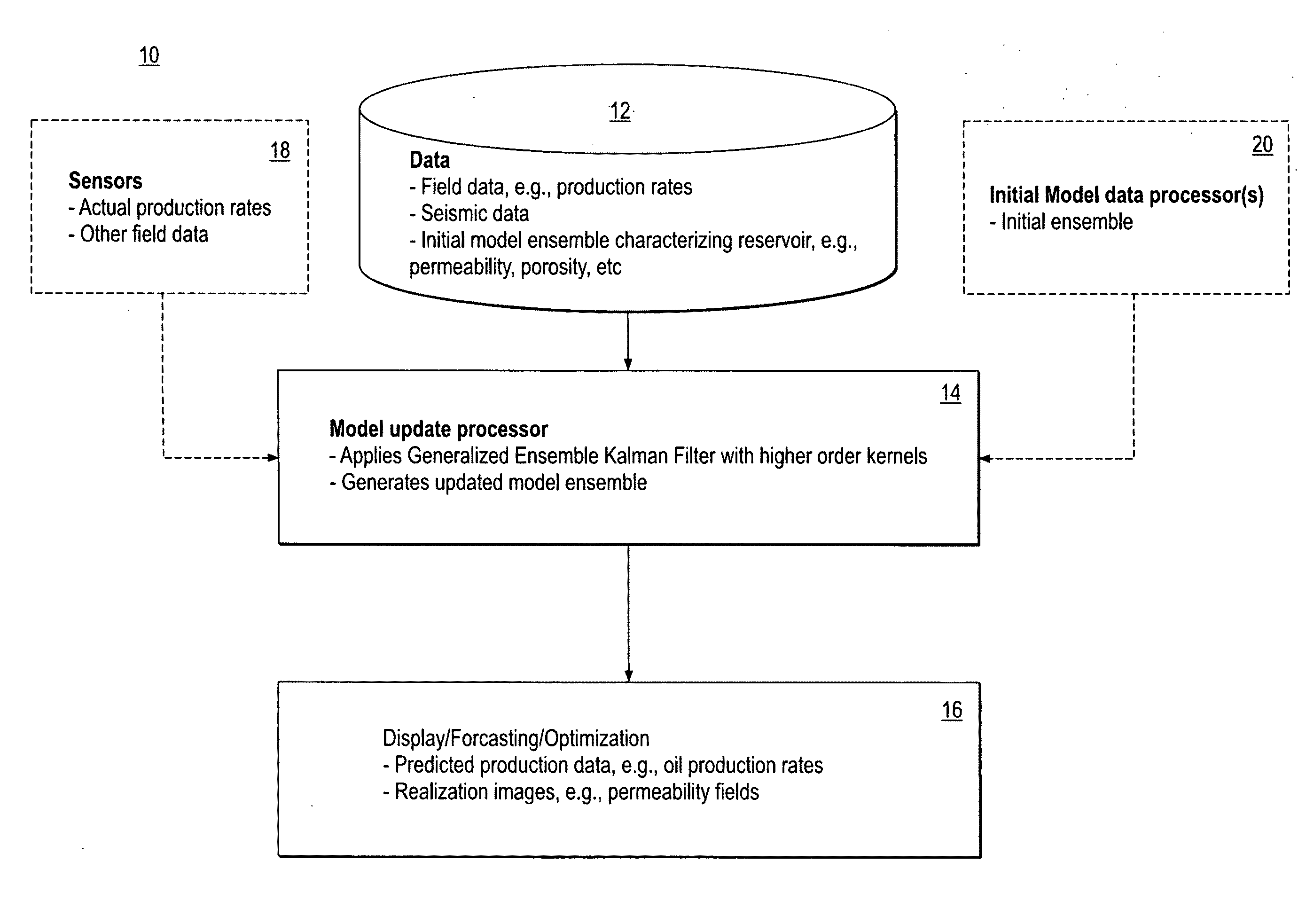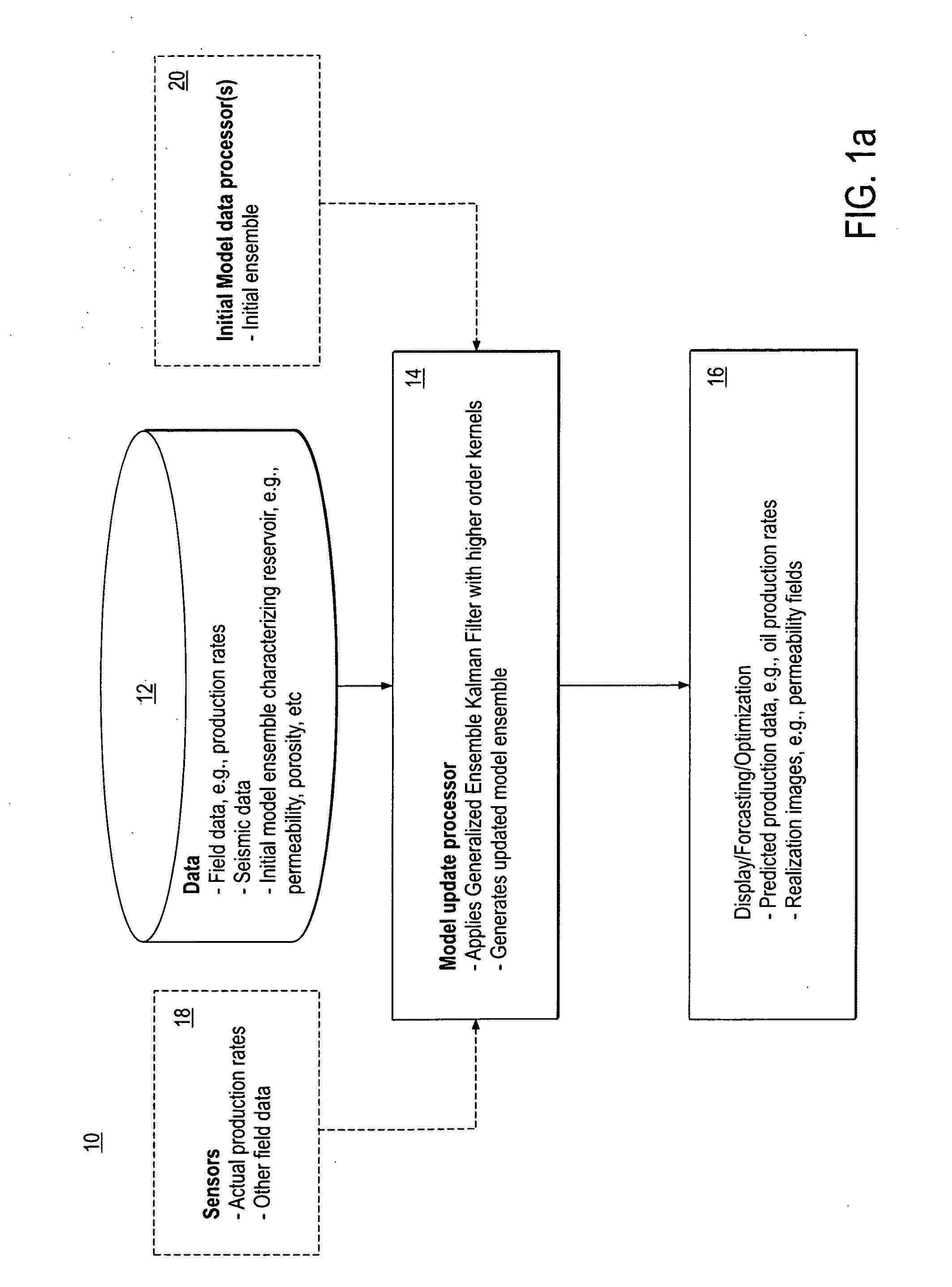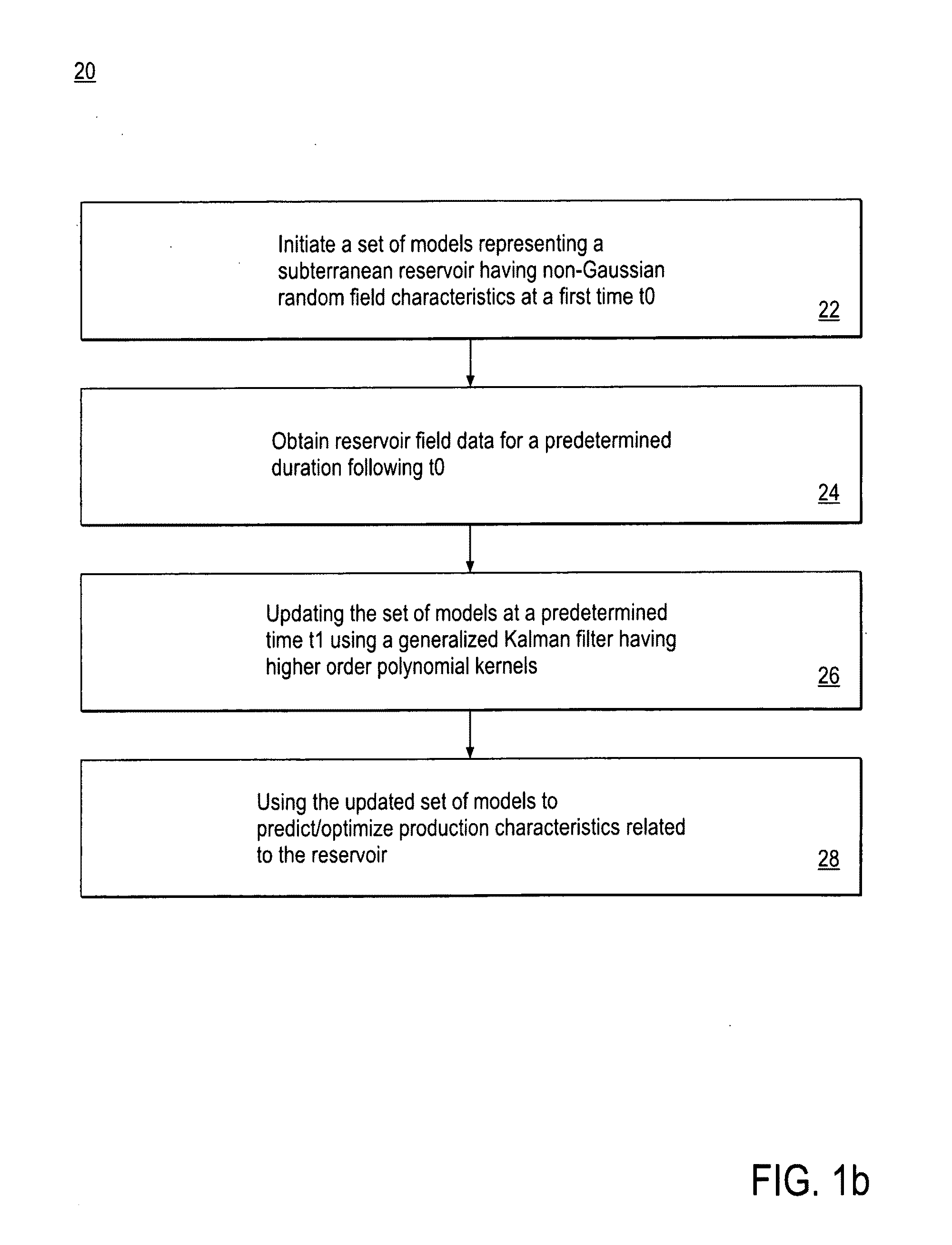System and method for predicting fluid flow in subterranean reservoirs
a technology of subterranean reservoirs and fluid flow, applied in the direction of instruments, cad techniques, analogue processes for specific applications, etc., can solve the problems of doubtful prediction capacity of such models, and achieve the effect of maximizing the accuracy of reservoir prediction data
- Summary
- Abstract
- Description
- Claims
- Application Information
AI Technical Summary
Benefits of technology
Problems solved by technology
Method used
Image
Examples
example 1
Channel Sand Model
[0103]The simulation model for this example represents a simple 2D horizontal square reservoir covering an area of 450×450 m2 with a thickness of 10 m, and is modeled by a 45×45×1 horizontal 2D grid. The fluid system is essentially an incompressible two-phase unit mobility oil-water system, with zero connate water saturation and zero residual oil saturation. The reservoir is initially saturated with oil at a constant pressure of 5800 psi at the top.
[0104]The reference or “true” permeability field is that of a fluvial channelized reservoir shown in FIGS. 2a and 2b, and is obtained using the training image in FIG. 2c with the multi-point geostatistical software snesim (Strebelle, S., Conditional Simulation of Complex Geological Structures using Multiple-point Statistics, Mathematical Geology, 34, 1-22, 2002). In FIG. 2a, high permeability sand is depicted by region 32 and the low permeability background is depicted by region 34. The sand and background are assumed to...
example 2
“Donut” Sand Mode
[0110]The reservoir model for this example is the same at the last example. The only difference is the reference permeability field, shown in FIG. 14a, which is obtained using the training image shown in FIG. 15 with the geostatistical software filtersim (Zhang, T., Multiple Point Geostatistics: Filter-based Local Training Pattern Classification for Spatial Pattern Simulation, PhD Thesis, Stanford University, Stanford, Calif., 2006). The permeability field is characterized by high permeability circular inclusions (“donuts”) 142 immersed in a low permeability background (144 regions). The model is run with the true permeability field for 950 days in this case to obtain the observed data. As in the last example, an initial ensemble of 100 permeability fields are obtained using filtersim with the same training image as in FIG. 15, and four of these realizations are shown in FIGS. 16a-16d.
[0111]The KEnKF is applied to this ensemble over 5 assimilation steps of 190 days...
PUM
 Login to View More
Login to View More Abstract
Description
Claims
Application Information
 Login to View More
Login to View More - R&D
- Intellectual Property
- Life Sciences
- Materials
- Tech Scout
- Unparalleled Data Quality
- Higher Quality Content
- 60% Fewer Hallucinations
Browse by: Latest US Patents, China's latest patents, Technical Efficacy Thesaurus, Application Domain, Technology Topic, Popular Technical Reports.
© 2025 PatSnap. All rights reserved.Legal|Privacy policy|Modern Slavery Act Transparency Statement|Sitemap|About US| Contact US: help@patsnap.com



